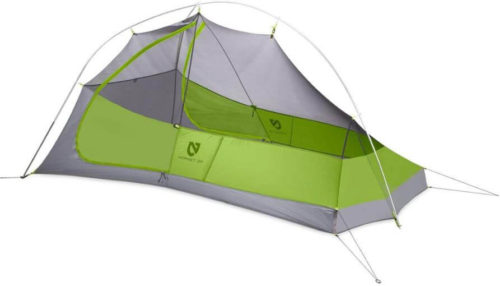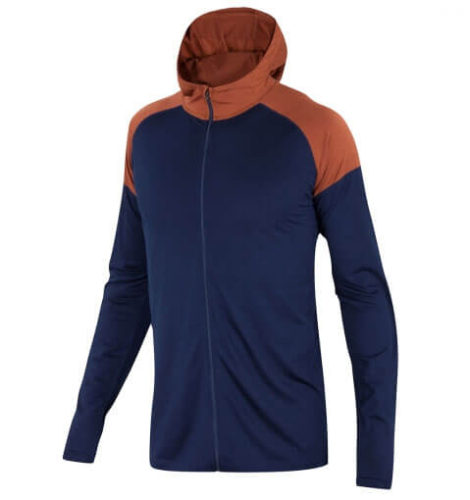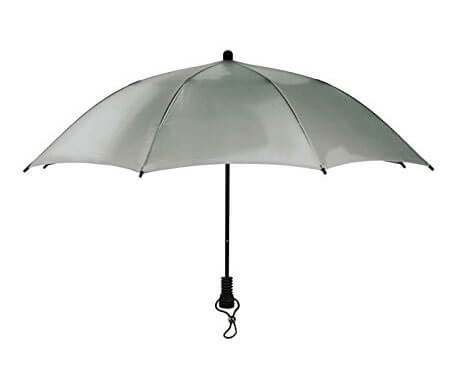As day zero comes closer and closer, I have finally put together my complete gear list. The first 700 miles of the Pacific Crest Trail offers a desert climate interspersed with 10,000 foot tall, snow covered peaks. The combination of unrelenting sun and long waterless stretches mixed with the occasional high altitude trekking through snow offers an interesting set of gear selection challenges.
All of the gear below is subject to change as the hike goes on and the climates change. I will be posting updates to my gear list as I enter each new section of the trail (desert, Sierra Nevada, Northern California, Oregon, Washington). If you want to follow along with my trip, please subscribe for email updates!
Shelter and Sleep System
For my tent I am going with a more traditional double walled tent. The PCT is a very dry trail and I want to have the option of setting up my tent without the rain fly so I can fall asleep under the stars but still be protected from the bugs.
Instead of bringing a traditional sleeping bag, I am trying out a sleeping quilt for the first time. It reduces the weight significantly by removing things such as the zipper and hood, and most of my time camping I have used my sleeping bag like a quilt anyway - I always found enclosing myself with a zipper to be constricting.
My sleeping pad was a quick decision, the Thermarest Neo Air XLite is one of the most popular pads for thru hikers due to it’s amazing weight to comfort ratio. One complaint I have is that my shoulders/arms do not fit on the pad, so I may wind up wishing I had purchased the wide version.
- Tent - Nemo Hornet 2P
- Sleeping Quilt - Enlightened Enigma 20° Quilt
- Sleeping Pad - Thermarest Neo Air XLite
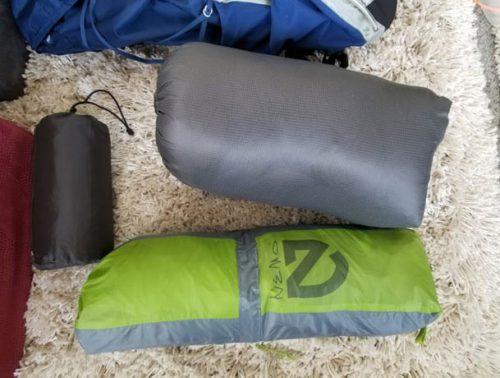
Pictured is my tent, my sleeping quilt, and my sleeping pad.
Trail Gear
When it came to backpacks, I didn’t look much further than the Osprey Exos 58. It’s one of the lightest packs available from more mainstream gear makers. I could have gone lighter with a cottage industry pack, but I like the reliability and warranty provided by a big name company.
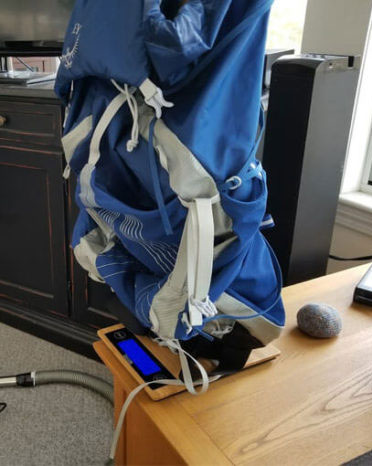
I was somehow able to magically balance my empty Osprey Exos on my tiny food scale.
To begin the hike I will be starting off with my Salomon Speedcross 4. I have enjoyed these shoes for a season and now and I hope they do me well on the PCT! I expect to get around 500 miles in these shoes before I need to start looking for a new pair.
I have had the Black Diamond Trail Ergo Cork Trekking Poles for several years now, and they show no sign of wearing out. As such they were an easy pick to take on the trail with me.
- Backpack - Osprey Exos 58
- Rain Cover - Osprey UltraLight Raincover - Large
- Hiking Shoes - Salomon Speedcross 4
- Poles - Black Diamond Trail Ergo Cork Trekking Poles
Clothes
I will have one main set of “hiking clothes” for the duration of the hike. On top of that I will have several other layers that can be added and combined for everything from snow to sun protection. For sleeping I will have a separate outfit that is to be kept dry at all times and only used for sleeping.
Main Outfit -
- Hiking Shirt - Ibex Merino Wool W2 Sports Tee
- Hiking Pants - REI Sahara Convertible Pants
- Underwear x2 - ExOfficio Boxer Briefs
- Socks x2 - Darn Tough 1/4" socks
Layers -
- Mid Layer - Ibex W2 Hoodie
- Down Puffy Jacket - Ghost Whisperer jacket
- Rain/Wind Jacket - Outdoor Research Helium II Jacket
Sleep/Camp Clothes
- Base Layer Top - Ibex Woolies 1 Crew Shirt
- Base Layer Bottom - Smartwool Merino 150 Baselayer Bottom
- Sleep Socks - Darn Tough Hiker Micro Crew Cushion Socks
- Camp Shoes - Teva Mush II
Kitchen & Food Storage
Everything I cook will be made using one pot and eaten straight out of that same pot. I'll be bringing a spork to give me a little bit of extra utility when I can't scoop up my last few ramen noodles.
- Stove - MSR Pocket Rocket 2
- Pot - Evernew Titanium Pot 1.3 L
- Lighter
- Spork - Sea to Summit Alpha Light Spork
- Knife - Gerber Paraframe
- Food storage - Antigravity Bear Bag System

My entire kitchen for the next 6 months.
Water Storage & Filtering
Being the desert, water is going to be a big concern. There will be sections where I may need to go 20 or more miles before I get more water, and because of that I need to be able to carry up to 8 liters at a time. Enter the water bags - lightweight plastic ‘bottles’ that can be folded up and stored when I don't need them, and can hold large amounts of water for when I do. I will likely send the water bags home after the desert.

The Sawyer Squeeze with the different water bags that I will be bringing.
- Filter - Sawyer Squeeze
- Backup - Iodine tablets
- Water Bottles - 1.5L Smartwater Bottles x2
- Additional Water Capacity - Evernew 2L bag, Platypus 1L bag, Sawyer Squeeze 1L water bags x2
Sun Protection
Another problem in the desert is the constant sun exposure. In addition to the standard hat and sunglasses, I will also be hiking with an umbrella to provide mobile shade. When I finish the desert I will send home the umbrella, but I may consider having it sent back to me once I get up to the rainy sections of Oregon and Washington.
- Sun Glasses
- Hat - REI Sun Hat
- Umbrella - Liteflex Trekking Umbrella
- Sun gloves - Outdoor Research Active Ice Spectrum Sun Gloves
Electronics
Since my phone takes really good pictures already, I opted to purchase a couple of high end lenses for it instead of bringing a separate camera. Moment makes fantastic lenses that screw right onto a special case that you can put on your phone. I highly recommend them if you're looking to take your phone picture game to the next level.
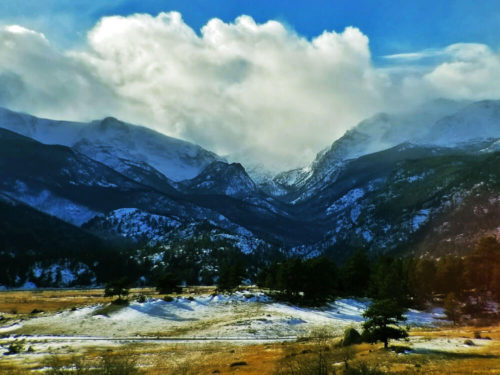
Photo shot using Moment's 60ml telephoto lense.
You'll notice that I am bringing both a locator beacon and a satellite messenger, which some people may say is redundant. However the beacon is what I have for actual emergencies and the messenger is to communicate with my girlfriend and my family when I am out of cell service range and to use as a backup GPS to my phone. I wrote more about the difference between a locator beacon and a satellite messenger here. I consider the messenger more of a luxury item and would never go on something like the PCT without an emergency beacon.
- Phone - Samsung Galaxy S8
- Headphones
- Extra Battery - Anker Powercore 2100
- Locator Beacon - Ocean Signal rescueME PLB1
- GPS/Satellite Messenger - Garmin inreach Explorer +
- Headlamp - Petzl Actik
- Charger/Cords - iClever Dual Fast Charger
- Phone Camera Lenses - Mini Macro Lens; Moment Tele, Wide Angle, and Superfish lenses
- Tripod - Joby Gorilla Pod
- Watch - Casio PAG2400
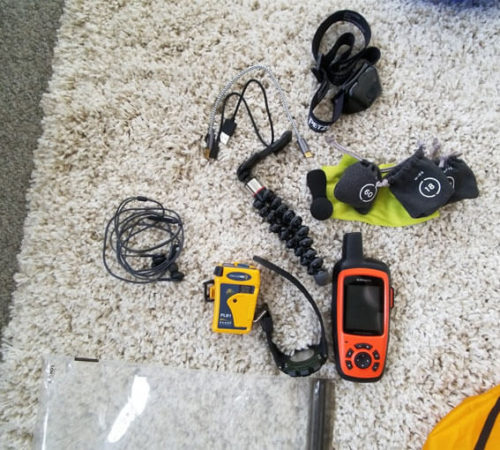
Assorted electronics for the trail.
Hygiene
If you’ve never used Dr. Bronner’s magic soap before, I would highly recommend it. It is the main soap that I use in my everyday life and can be used for your body, as toothpaste, and for cleaning dishes. It’s also biodegradable, so you can feel better about the waste you’re leaving behind.
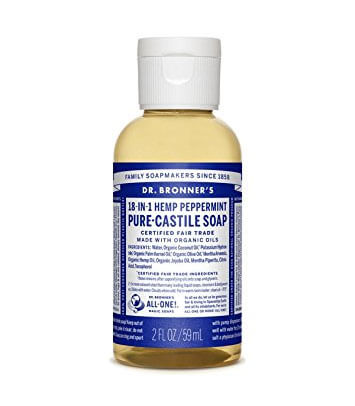
Dr. Bronner's Magic Soap! Use it for literally everything.
- Toothbrush
- Floss
- Soap/Toothpaste - Dr. Bronner’s
- Gold Bond
- Body Glide
- Nail Clippers
- Wet Wipes
- Toilet Paper
- Hand Sanitizer
- Trowel - Deuce of Spades
- Camp towel - REI Co-op Multi Towel Lite Medium
First Aid & Repair Kit
In my first aid kit I have a variety of bandages and medicine, as well as a first-aid “cheat sheet” card that I received after becoming certified in Wilderness First-Aid. I will also be bringing a handful of repair supplies, such as duct tape, a mini sewing kit, and sleeping pad/tent repair tape.
Additional Items
Lastly I have a handful of other items that don’t really fall into any other category. These include items for journaling and non digital forms of navigation should I have any technology failures. One of the coolest extra items is my pack liner. It is a 40 gallon waterproof bag that can also be used to inflate my sleeping pad.
- Maps - US Forest Service Maps
- Mini backup compass
- Ear Plugs
- Mini Journal
- Pen
- Sharpie
- Pack Liner - Thermarest Neoair Pump Sack
- Bag for electronics and misc - LOKSAK
- Carabiners
- Money, id, cards, permits
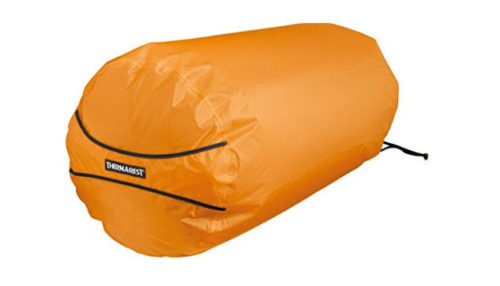
Using the Thermarest Neoair Pump Sack to inflate my sleeping pad will help keep mold from growing inside of the pad and make it a faster process when I am tired after a day of hiking.
So that is what I will be brining for the start of my trip. My base weight comes out to about 17.5 pounds. If you’re interested in the weights of all the items, you can see them on lighterpacks. If you want follow me along my trip, please subscribe at the bottom of your window. And I am still raising money for Hike For Mental Health and am looking for donations to reach the ultimate goal of $1 per mile for a total of $2660!
